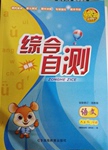题目内容
Mexico is a country with rich culture. It celebrates its new year with many traditions.(1) Mexican people connect colors with The New Year traditions. Each color has its own meaning. For example, red means love, yellow means happiness, and green means rich, white means good health. People decorate their houses with these colors.
The New Year party also plays a big role. It usually starts on the New Year Eve. And people play games together. They write down their good and bad events of the year. Then, at 12 o’clock in the midnight, all the people would throw papers in the fire. This tradition means a new beginning for the next year.
Besides the party, there is another popular New Year tradition in Mexico. People have to eat twelve grapes before the New Year Eve. Each grape means to have good luck in each month of a year. When they eat grapes, they should also make wishes for the coming New Year.
In Mexico, celebrating the New Year is a big thing. If you want to experience the traditions of this country, don’t miss the chance to visit Mexico during the New Year.
任务一:将(1)翻译成汉语1.
任务二:Why do people throw papers in the fire ?
2.
任务三:What does the underlined word “ it” refer to ?
3.
任务四:What’s the passage mainly about ?
4.
 综合自测系列答案
综合自测系列答案

